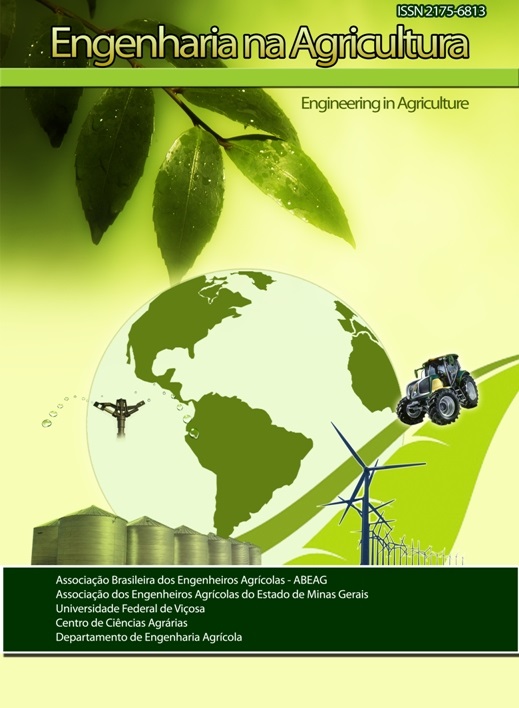CINÉTICA DE SECAGEM DE GRÃOS DE QUINOA (Chenopodium quinoa W.)
DOI:
https://doi.org/10.13083/reveng.v25i4.773Palavras-chave:
dessorção, modelagem matemática, pseudocerealResumo
A secagem é um processo pós-colheita largamente utilizada para o controle e a manutenção da qualidade de produtos agrícolas. Com este estudo se objetivou analisar a secagem de grãos de quinoa e ajustar modelos matemáticos existentes aos valores experimentais de razão do teor de água. Este estudo foi realizado entre Abril e Agosto de 2014. O teor de água inicial variou entre 28,32 e 27,48% b.s., sendo os grãos submetidos a secagem em estufa com circulação forçada de ar nas temperaturas de 40, 50, 60 e 70 °C, até atingirem teores de água entre 8,94 a 5,76% b.s. Treze modelos matemáticos foram ajustados aos dados experimentais. Foram consideradas as magnitudes do coeficiente de determinação (R2), erro médio relativo (P) e do desvio padrão da estimativa (SE), e ainda a facilidade de uso do modelo. Com base nos resultados obtidos, concluiu-se que os modelos de Page, Midilli e Logarítmico foram os que apresentaram coeficientes estatísticos mais satisfatórios para descrever as curvas de secagem de quinoa, em todas as temperaturas estudadas. O modelo de Page foi selecionado para descrever as curvas de secagem de quinoa devido a simplicidade de uso.Downloads
Downloads
Publicado
Como Citar
Edição
Seção
Licença
Autores que publicam nesta revista concordam com os seguintes termos:
O(s) autor(es) autoriza(m) a publicação do texto na da revista;
O(s) autor(es) garantem que a contribuição é original e inédita e que não está em processo de avaliação em outra(s) revista(s);
A revista não se responsabiliza pelas opiniões, ideias e conceitos emitidos nos textos, por serem de inteira responsabilidade de seu(s) autor(es);
É reservado aos editores o direito de proceder a ajustes textuais e de adequação às normas da publicação.
A partir da submissão, o autor estará cedendo integralmente seus direitos patrimoniais da obra à publicação, permanecendo detentor de seus direitos morais (autoria e identificação na obra) e de acordo com a Licença Creative Commons, CC BY-NC.








 Esta obra está licenciada com uma Licença
Esta obra está licenciada com uma Licença 